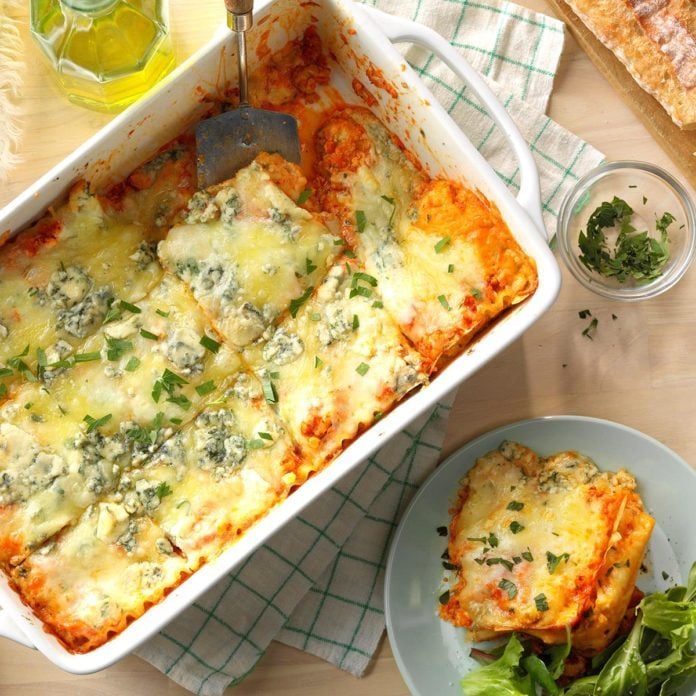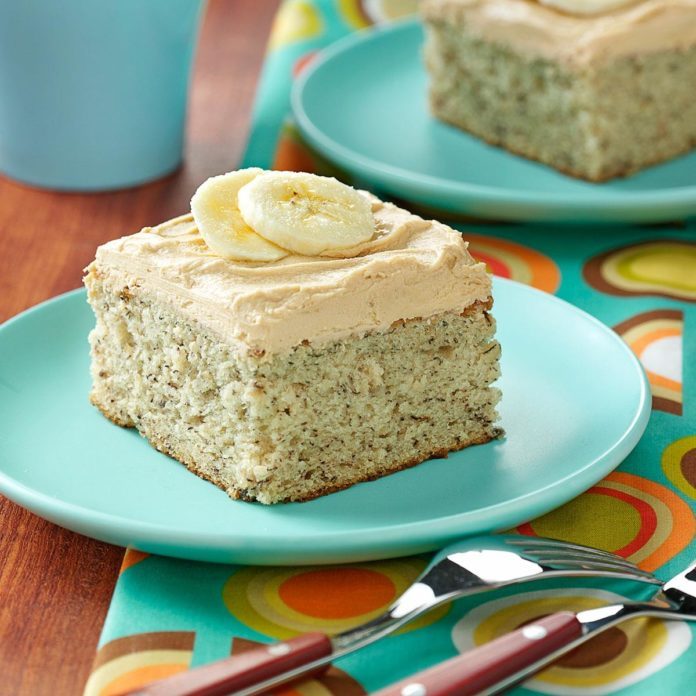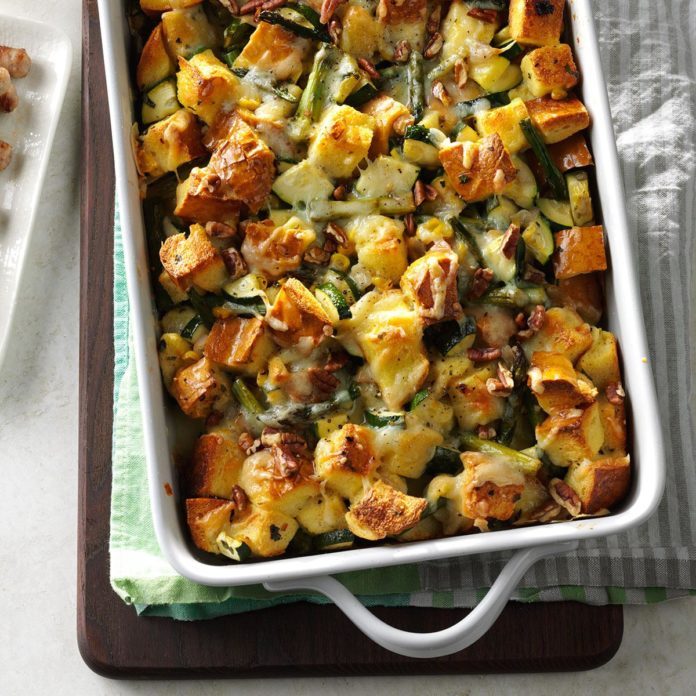If you’re trying to declutter your kitchen and choose one 13×9 pan (or 8×8, or loaf pan, or…you get the idea) for all your cooking and baking needs, I have some bad news: You might want to consider keeping two. Whether you reach for a glass or metal baking pan depends on a few factors.
Psst: You need these 13x9s in your collection.
When to Use Metal Bakeware
When I was a restaurant chef, everything we used was metal. Glass not only had an increased chance of breaking at our high-volume usage, but the metal pans were just more versatile. Metal bakeware minimizes cleanup on dishes like braised short ribs—you can put the pan directly on the cooktop to sear the meat before adding liquid, covering it with aluminum foil and transferring it to oven to braise. You could also place it directly underneath the broiler to melt cheese on top of your casserole after it bakes.
On the flip side, while metal is a great conductor of heat, it’s not ideal for retaining heat. It will heat up rapidly, but it loses that heat just as quickly when it’s removed from the oven. It’s also important to remember that acidic foods can react with the material, adding a slightly metallic flavor to your meal.
Reach for metal when you’re: making quick-roasted meals, browning food or braising meats.
Skip metal when you’re: making casseroles you want to stay warm in the pan or cooking acidic foods (like fruit cobblers or anything tomato-based).
When to Use Glass Bakeware
Glass is the 13×9 choice of most home cooks (myself included). It might not be great at conducting heat (so it’ll be slow to heat up), but it will retain that heat for significantly longer than a metal pan. This makes it the ideal choice for making tried-and-true casseroles, which may sit on the countertop for some time before serving. In general, glass bakeware is also more dinner table presentable, so it’ll look great if you bring the whole casserole straight to the table.
The one thing you should never do with glass bakeware is put it underneath the broiler. The tempered glass is designed to handle heat but the broiler is too intense; it will definitely crack your dish (or worse). It also can’t be used on the stovetop, so don’t plan on simmering pan drippings in it to make gravy.
Reach for glass when you’re: serving casseroles in the baking dish.
Skip glass when you’re: transferring casseroles from the oven to the stovetop or broiler—even if it’s just to melt cheese on the top of a casserole at the end.
Now that you have the lowdown, try these 13×9 recipes for a crowd. You’ll know just what pan to use.
Potluck-Perfect 13x9 Recipes
Every time that I make this cheesy baked spaghetti, I get requests for the recipe. It puts a different spin on pasta and is great for any meal. The leftovers, if there are any, also freeze well for a quick dinner later in the week. —Ruth Koberna, Brecksville, Ohio
Get Recipe
I love a Reuben sandwich, and this recipe combines all of those flavors into a warm and gooey party dip. —Sylvia Metzler, Chillicothe, Ohio
Get Recipe
For 30 years, friends have been telling me to open a pizzeria using this recipe. It even freezes well. —Elizabeth Wolff, Carmel, Indiana
Get Recipe
With five different dairy products, you know this make-ahead mashed potato casserole is going to be super rich and, of course, delicious. It gets even better topped with onions and bacon! —JoAnn Koerkenmeier, Damiansville, Illinois
Get Recipe
This banana sundae dessert is sure to be a family favorite! You get a taste of chocolate, banana and strawberries in every bite of the frosty treat. It does take a while to assemble, but it's worth it in my book. —Caroline Wamelink, Cleveland Heights, Ohio
Get Recipe
If you'll be having overnight company during the holidays, you may want to consider this hearty casserole. Guests will be impressed with its bountiful filling and scrumptious flavor. It's the perfect Christmas or Easter breakfast casserole. —Nelda Cronbaugh, Belle Plaine, Iowa
Get Recipe
We live in Coca-Cola country, where everyone loves a chocolaty, moist sheet cake made with the iconic soft drink. Our rich version does the tradition proud. —Heidi Jobe, Carrollton, Georgia
Get Recipe
A friend once told me about a potato dish her mother used to make. She remembered that Swiss cheese and butter were standouts. Here's my re-creation—and my friend actually liked it better than her mom’s version. —Barb Templin, Norwood, Minnesota
Get Recipe
Give traditional lemon bars a tasty twist with the addition of almonds and coconut. —Taste of Home Test Kitchen
Get Recipe
You'll know this snack is a hit at your next gathering when you come home with an empty pan! —Denise Smith, Lusk, Wyoming
Get Recipe
Need to bring a dish to pass this weekend? This make-ahead strawberry pretzel salad will disappear quickly at any potluck. —Aldene Belch, Flint, Michigan
Get Recipe
This recipe was inspired by my daughter's favorite food—Buffalo wings! It tastes as if it came from a restaurant. —Melissa Millwood, Lyman, South Carolina
Get Recipe
I found this recipe more than five years ago and have been making it for family gatherings ever since. The coffee-flavored frosting complements the moist banana cake. —Kathy Hoffman, Topton, Pennsylvania
Get Recipe
This hearty entree warms up any breakfast or brunch menu with its herb-seasoned flavor. —Darlene Markham, Rochester, New York
Get Recipe
One of the best things about this recipe is that theses mint chocolate brownies get moister if you leave them in the refrigerator for a day or two. The problem at our house is no one can leave them alone for that long! —Helen Baines, Elkton, Maryland
Get Recipe
"Ooey, gooey, great!" is how friends and family describe this chocolate-peanut butter dessert. I appreciate the make-ahead convenience. —Marilee Evenson, Wisconsin Rapids, Wisconsin
Get Recipe
Recipes that don't tie me to the kitchen—that’s what I’m all about. I make this luscious dish the night before breakfast or brunch with guests. —Patricia Harmon, Baden, Pennsylvania
Get Recipe
Two kinds of candy bars baked into these brownies make them an extra special treat. —Sharon Evans, Clear Lake, Iowa
Get Recipe
This cheesy potato casserole is always popular. It's a nice change from mashed potatoes and with a bread crumb and crumbled bacon topping, it looks as good as it tastes. —Helen Haro, Yucaipa, California
Get Recipe
Make the most of angel food cake, pie filling and whipped topping by creating this light impressive dessert that doesn't keep you in the kitchen for hours. It's the perfect way to end a summer meal. —Carol Johnson, Tyler, Texas
Get Recipe
We always serve food at our Bunco games, and since one of us is a vegetarian we like to make fun meatless dishes we can all enjoy. This strata can easily be doubled and tastes fantastic hot or at room temperature. —Doris Mancini, Port Orchard, Washington
Get Recipe
My husband and I love to have a hot breakfast, but find it difficult with two kids. This dish is excellent to prepare the night before and bake the next day for your family or to take into work to share with co-workers—there are never any leftovers.—Jennifer Berry, Lexington, Ohio
Get Recipe
I combined the perfect, simple summer snack with my favorite brownie recipe to get a treat that's sure to wow at your next big party. —Judy Cunningham, Max, North Dakota
Get Recipe
The post Here’s When to Use a Glass or Metal Baking Pan appeared first on Taste of Home.
Lindsay D. Mattison






















